
USS Vancouver (LPD-2) was a Raleigh-class amphibious transport dock, named after the city of Vancouver, Washington, which was in turn named after the famous north-west explorer George Vancouver. Vancouver's was commissioned 11 May 1963 and served during the Vietnam War and 1991 Gulf War. She was decommissioned 27 March 1992, placed in reserve and stricken 8 April 1997. Title was transferred to the United States Maritime Administration 29 November 2001. Vancouver was towed for scrapping in Brownsville, Texas, in April 2013.

USS Talladega (APA/LPA-208) was a Haskell-class attack transport of the US Navy. She was of the VC2-S-AP5 Victory ship design type. Talladega was named for Talladega County, Alabama.

USS Paul Revere (APA/LPA-248) was the lead ship of the Paul Revere class of attack transport in the United States Navy. She was named for the early patriot and Founding Father, Paul Revere (1735–1818). She later served in the Spanish Navy as Castilla (L-21).
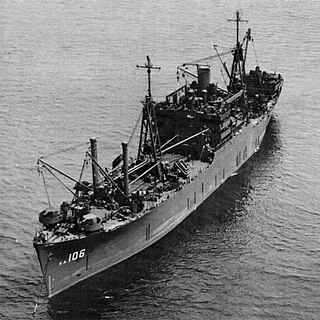
USS Union (AKA-106) was a Tolland-class attack cargo ship of the United States Navy, the fourth ship with this name, and served as a commissioned ship for 25 years and 1 month.
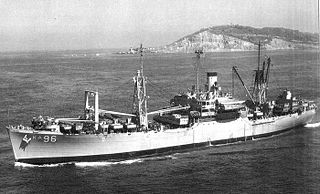
USS Mathews (AKA-96) was an Andromeda-class attack cargo ship named after Mathews County, Virginia. She served as a commissioned ship for 18 years and 8 months.

USS Lenawee (APA-195) was a Haskell-class attack transport in service with the United States Navy from 1944 to 1946 and from 1950 to 1967. She was scrapped in 1975.
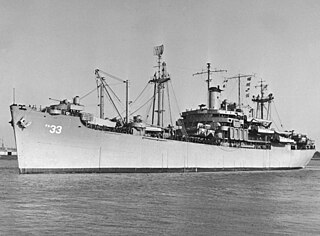
USS Bayfield (APA-33) was a Bayfield-class attack transport built for the United States Navy during World War II, the lead ship in her class. Named for Bayfield County, Wisconsin, she was the only U.S. Naval vessel to bear the name.

USS Pickaway (APA/LPA-222) was a Haskell-class attack transport that saw service with the US Navy in World War II, the Korean War and the Vietnam War. She was of the VC2-S-AP5 Victory ship design type and named after Pickaway County, Ohio.

USS Chilton (APA-38) was a Bayfield-class attack transport. Her task was to deliver troops to the battle front, and to recover and care for the wounded. She served in the Pacific Ocean in the war against the Empire of Japan and returned home post-war with one battle star to her credit.

USS Sandoval (APA-194/LPA-194) was a Haskell-class attack transport in service with the United States Navy from 1944 to 1946, from 1951 to 1955 and from 1961 to 1970. She was scrapped in 1983.
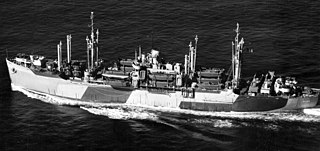
USS Magoffin (APA/LPA-199) was a Haskell-class attack transport in service with the United States Navy from 1944 to 1946 and from 1950 to 1968. She was scrapped in 1980.

USS Menard (APA-201) was a Haskell-class attack transport that saw service with the US Navy in World War II, the Korean War and Vietnam War.

USS Sarasota (APA/LPA-204) was a Haskell-class attack transport that saw service with the US Navy in World War II, Korean War Era and after. She was of the VC2-S-AP5 Victory ship design type. Sarasota was named for Sarasota County, Florida.

USS Telfair (APA/LPA-210) was a Haskell-class attack transport that saw service with the US Navy in World War II and the Korean War. She remained in service through most of the 1950s and 1960s, where she participated in various peacetime operations. Telfair was named for Telfair County, Georgia, which was itself named after Edward Telfair, the second Governor of the state, a member of the Continental Congress, and a signer of the Articles of Confederation.
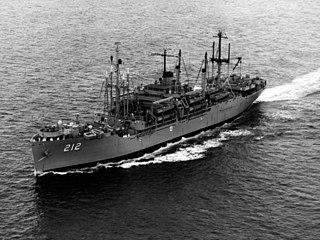
USS Montrose (APA/LPA-212) was a Haskell-class attack transport in service with the United States Navy from 1944 to 1946 and from 1950 to 1969. She was scrapped in 1970.

USS Mountrail (APA/LPA-213) was a Haskell-class attack transport of the US Navy in World War II, the Korean War and Vietnam War era. She was of the VC2-S-AP5 Victory ship design type. Mountrail was named for Mountrail County, North Dakota.

USS Navarro (APA/LPA-215) was a Haskell-class attack transport of the US Navy. She was of the VC2-S-AP5 Victory ship design type that saw service in World War II and the Vietnam War. Navarro was named after Navarro County, Texas.
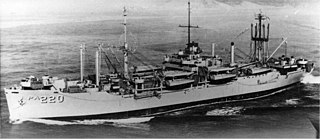
USS Okanogan (APA/LPA-220) was a Haskell-class attack transport that saw service with the US Navy in World War II, the Korean War and the Vietnam War. She was of the VC2-S-AP5 Victory ship design type and named after Okanogan County, Washington.
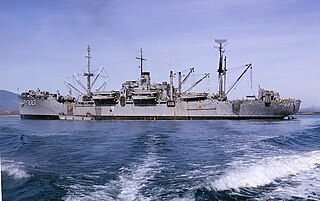
USS Renville (APA-227) was a Haskell-class attack transport that saw service with the US Navy in World War II, the Korean War and the Vietnam War.

USS George Clymer (APA-27) was an Arthur Middleton-class attack transport that saw service with the US Navy in four wars - World War II, the Chinese Civil War, the Korean War and the Vietnam War. It was named after United States Founding Father George Clymer.




















